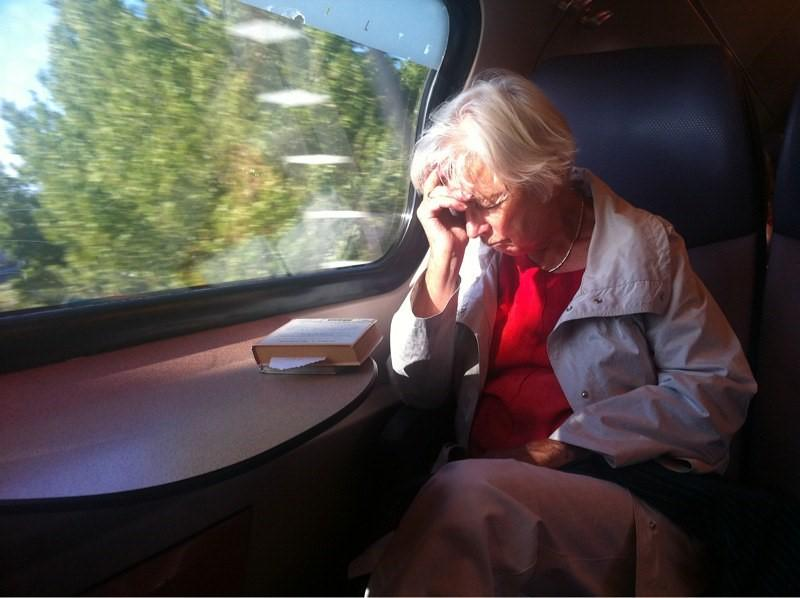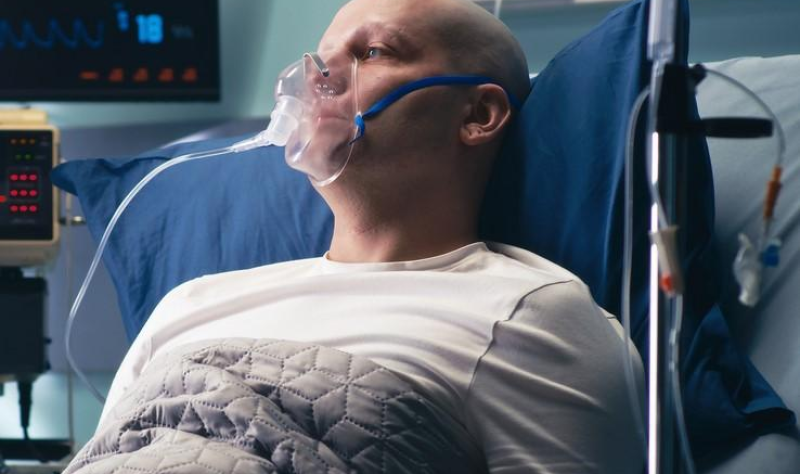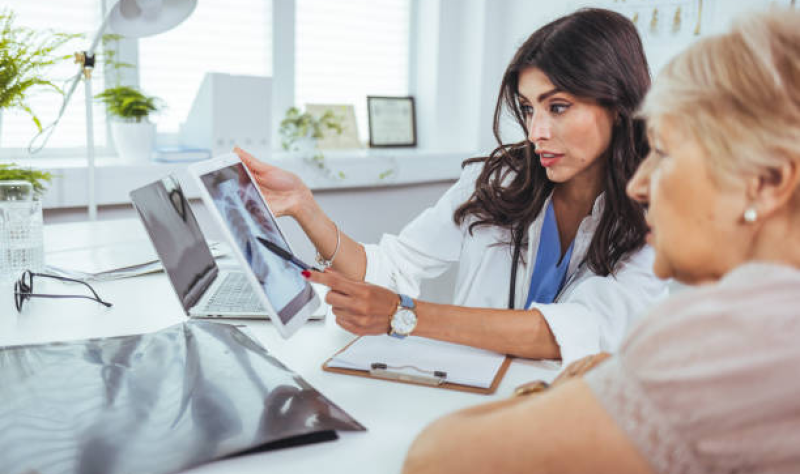Should you mask or test for Thanksgiving? Here’s how COVID experts are handling the holidays


Thanksgiving is approaching, and the pandemic picture is much different from the previous two holidays. Multiple vaccines, boosters and therapeutics are available, at-home testing is easily accessible, and most people have some form of immunity from vaccinations, prior infection or both. Most COVID restrictions have been lifted for many months now, including masking requirements.
At the same time, health experts and officials are warning of a possible winter surge with COVID cases in California on the upswing, plus the potential for a “tripledemic” as flu and RSV cases strain local hospitals. Cases spiked around this time for the past two years as people traveled and gathered for the holidays.
So, how should you prepare for Thanksgiving gatherings and travel? What precautions, if any, should you consider? We talked to experts about their recommendations for the holiday and what they would do for Thanksgiving.
COVID tests before traveling and gathering
Experts continue to recommend using at-home COVID testing ahead of higher risk activities, like traveling and gathering indoors in groups without masks. But is it really necessary for all holiday events, and what’s the best testing timeline?
UCSF infectious disease expert Peter Chin-Hong advises definitely testing under these circumstances:
• You have symptoms, even if they are mild. Use two to three antigen tests within two to three days if symptoms still persist. If the tests are negative, get a PCR test.
• At least three days after a credible exposure — i.e., someone tests positive that you had contact with for more than 15 minutes.
He also recommends testing if:
• You are going into a family or personal gathering with older, unboosted or very immunocompromised guests or relatives.
• You are returning from a trip where you participated unmasked in gatherings and you live with unboosted and elderly or immunocompromised household members.
What are the CDC’s COVID guidelines for the holidays?
In April, mask requirements on public transportation were dropped, but the CDC continues to recommend people wear masks in indoor public transportation settings. Anyone who tests positive for COVID should not travel and should isolate and stay home for five days, even if they are symptom-free, the CDC says.
Those who have symptoms should continue to isolate until they are fever-free for 24 hours and their symptoms start improving. If you are exposed to COVID, test at least five days after your last exposure (testing too early increases the chances of an inaccurate result) and wear a high quality mask in indoor public settings.
Though you can reduce your risk, you can’t eliminate it, experts said – and other respiratory illnesses like flu and respiratory syncytial virus are also spiking in the Bay Area and around the country.
“The guidelines for both are reasonable but they are not sufficiently directive,” said John Swartzberg, an infectious disease specialist at UC Berkeley. “Because my wife and I do not want to get COVID, influenza, or RSV, we will not be traveling over the holidays.”
The California Department of Public Health has updated ways to stay safe during the holidays, including checking for local COVID conditions, wearing a mask when cases are rising or when you are around unvaccinated or vulnerable individuals, and getting tested if you have symptoms.
Are California’s COVID case counts accurate? How do I make sense of COVID stats now?
Experts still follow coronavirus case rates to estimate when a surge is happening, said Abraar Karan, an infectious disease doctor at Stanford. In addition, “We use them to document spread of new variants, and we use this data to understand other effects besides mortality including morbidity and associated effects from mild to moderate infections,” he said.
However, COVID-19 data available online isn’t as robust as it used to be earlier in the pandemic. Fewer people are testing, experts said, and the majority of those who do are using at-home kits – means many cases now go uncounted.
Case rates now matter only in “the broadest sense, as many people are testing at home or not testing at all,” said Chin-Hong.
To judge local pandemic trends and risk, Chin-Hong said he looks at the rate of COVID case increases in a particular area, and the wastewater data if available.
Though the data has its limitations, it’s safe to assume during peak holiday travel season that “COVID is still very much there,” Chin-Hong said.
“So at the end of the day, assume at least a moderate COVID infection risk given where the numbers are headed and the limitations of what we can see with official data,” he said.
Karan said he also pays attention to what colleagues, family and friends are saying. In previous surges, he said, he would get many more calls from friends and family who were getting sick.
This holiday season, “I would look at test positivity percentage and assess how many tests are being run,” he said. “I also keep an eye on hospitalization numbers and who is getting hospitalized.”
While absolute numbers are “not very useful,” Swartzberg said, he monitors infection rates for how they are changing relative to where they have been. “I find the hospitalization and death data more useful,” but added that hospitalization data lags by about two weeks, and deaths by about one month.
Like Karan, Swartzberg said he would look at percent positivity numbers, relative changes in case numbers, and absolute changes in hospitalization and death data. He would also look at influenza and RSV activity in the community.
What other precautions should you take before and during Thanksgiving events and travel?
Experts say it’s important to be up to date on your COVID and flu vaccines. Wear a high quality N95 or KN95 mask when you are traveling and in indoor crowded spaces, which will also help with other respiratory viruses that are spreading, Karan said.
Chin-Hong also advises ventilating indoor event spaces as much as you can, and having a plan to receive Paxlovid if you are older than 65 years old or are immunocompromised. Hand washing hygiene is less important for COVID, he said, but it is “crucial” or other viruses including the flu, RSV and the common cold.
Swartzberg said if he and wife do gather with others for the holidays, they will only be indoors under specific circumstances:
• Everyone tests negative with a rapid test shortly before getting together.
• Those with even mild respiratory symptoms do not participate.
• Gatherings are limited to a small number of people.
• Everyone is up to date on their COVID and flu vaccines.
What’s the latest on COVID symptoms? What should you do if you start to exhibit any before Thanksgiving?
COVID symptoms can vary from person to person, and include sore throat, cough, headache, runny nose, nasal congestion and fatigue. Many of these symptoms are similar to the flu. Add fever to the list for both COVID and influenza if you are unvaccinated, Chin-Hong said.
Swartzberg said to assume any respiratory symptoms are “COVID until proven otherwise.”
If you’re symptomatic and a rapid home test comes back negative, Swartzberg said he would repeat it in 48 hours. If he was moderately ill and tested negative, he would get a PCR test. You can also simultaneously test for influenza, RSV and other respiratory pathogens.
Children younger than 2 with difficulty breathing, wheezing and poor appetite may have RSV, so should be tested, Chin-Hong advised.
“Travel or gather only if you are getting better and have no fever for at least 24 hours,” he said. “Wear a mask around others if you still have symptoms. Celebrate Thanksgiving on another day if you are sick in general, or have someone bring you some food.”
You may also be eligible for early therapeutics such as Paxlovid, which pharmacists at Walgreens and CVS can now prescribe.
Swartzberg advised talking to your doctor about any concerns, and going to the emergency room only if you are “quite ill.”
Read more here: Is it the flu, RSV or COVID? Here’s the latest ‘tripledemic’ advice from Bay Area experts
Should you still get a vaccine or booster now, days before the Thanksgiving holiday?
Chin-Hong said anyone who received the bivalent booster should be in “excellent shape” for Thanksgiving events and travel. And because the booster is a “reminder to your immune system…it will actually start working days after getting it.”
The bivalent booster was created to protect against both the original virus that causes COVID, and the BA.4 and BA. 5 omicron variants. According to the CDC’s variant tracker, as of the week before Thanksgiving, the BA.5 variant had the slight edge at 29.7% of cases sequenced, followed by BQ.1.1 at 24.1% and BQ.1 at 20.1%.
“Even though BA.5 is less dominant now, you will still have benefit even if the omicron grandchildren like BQ.1, BQ.1.1 and BN.1 are a little more resistant,” Chin-Hong said. “The antibodies generated by the bivalent booster should still overcome these new variants to prevent infection for at least three months, but prevent serious disease, hospitalizations and death for many, many months.”
Swartzberg’s take on the bivalent booster was more cautious, as he said it’s not yet known how well it works. Lab tests suggest it “may offer considerable protection,” but clinical data won’t be ready for a few weeks, he said.
“It is reasonable to assume that for the first month after the booster our immunity is optimal,” he said. “How fast it will wane after that is unknown. Previous boosters afforded good protection against hospitalization and death for at least three months, perhaps longer.”
Although experts say the boosters offer excellent protection against severe disease, hospitalization and death, Swartzberg said it’s important not to assume you are immune to getting or spreading COVID just because you were recently boosted.



